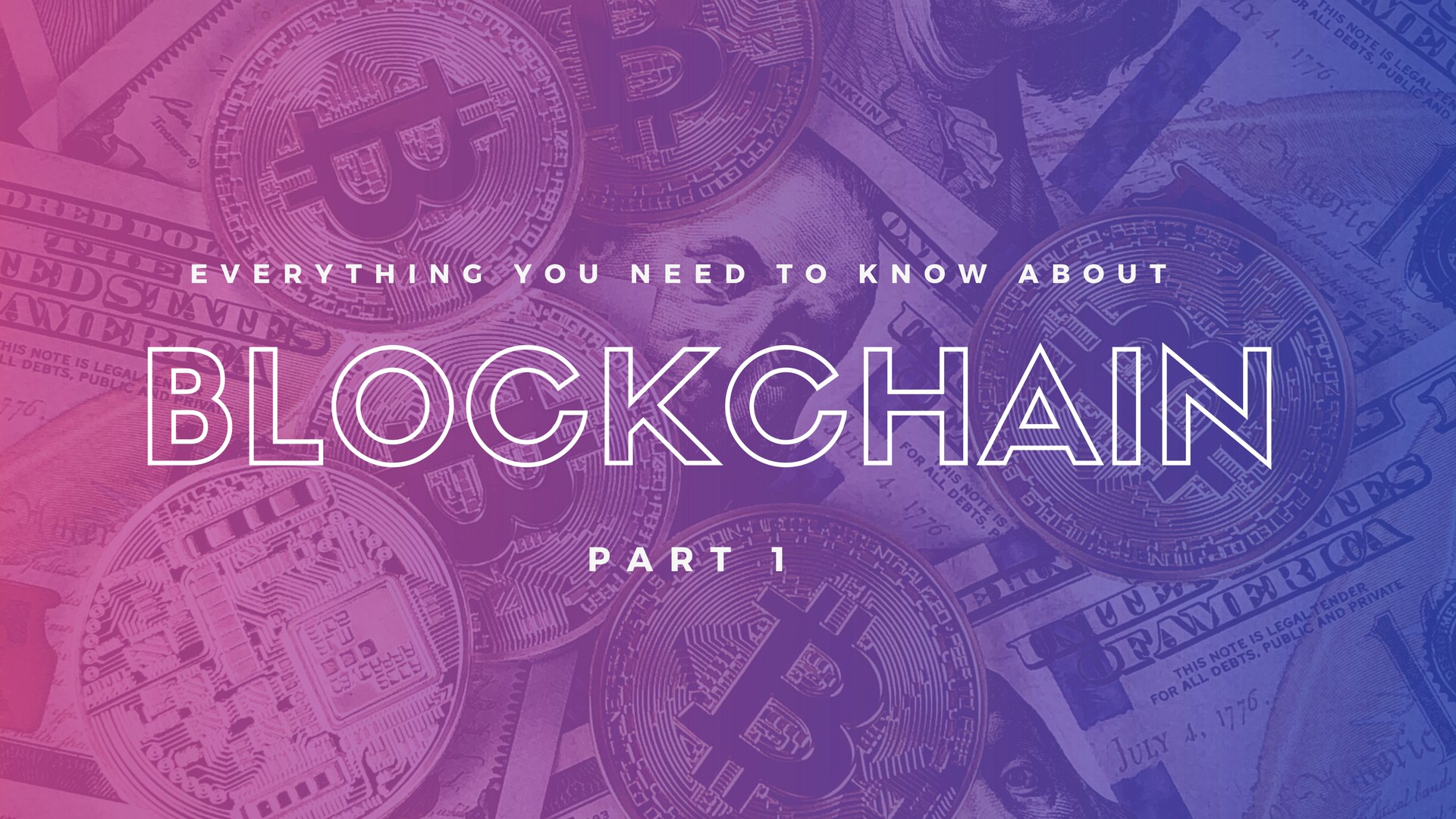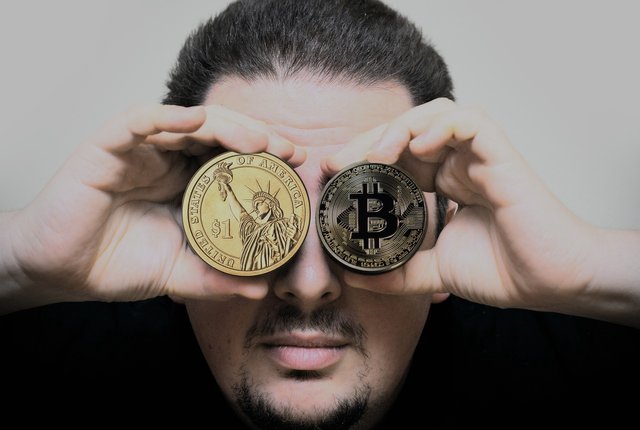
The blockchain is to Bitcoin, what the Internet is to Google. They are the technologies underpinning Bitcoin, Ethereum and more in the case of the blockchain, and Google, Facebook, etc. when it comes to the Internet. But blockchain’s potential uses extend well beyond the realm of digital money. Now, let’s begin with what we understand. Bitcoin is a digital version of an asset, a lot like gold, known as the cryptocurrency . Blockchain, the technology behind it, has the potential to transform the way the world functions.
What is blockchain?
Just about everything we do, involves the creation and movement of data be it hospital bills, home rent, using public transport or the credit card trail. The blockchain is a new way of storing and moving that data, wherein instead of holding that data in one place the information is spread over thousands of nodes across a network, all locked together with the help of cryptography. In this way, by replacing centralized authority with decentralized computing, blockchain allows us a new way of transacting with one another by bypassing traditional centralized authorities like the bank, currently at the heart of almost all human transactions. The blockchain gives us a database that is decentralized or a digital ledger of transactions anyone on the network can see using cryptography to keep exchanges secure. Now, before an exchange can be verified and recorded, this network, basically a string of computers, should all give its approval.
How exactly does a distributed database work?
Picture a spreadsheet duplicated numerous times over a network of computers. Now this network is designed to update the spreadsheet regularly. This way the information retained in a blockchain rests as a continuously reconciled and shared database. Again, the blockchain database isn’t kept in just one location, which means the records it keeps are genuinely public and verifiable, easily. No version of this data is centralized for a hacker to skew. To anyone on the internet, its data is hosted simultaneously, by numerous computers and is accessible.
But what’s wrong with the way we store information now?
Traditionally, we would send a Word document to the recipient asking them to make revisions to it. The problem with this is that you have to wait until you get a return copy before you can see and make changes to it since you were locked out of editing it until the person at the other end is done with it. This is how databases work today. Both owners can’t work on the same record at the same time. So for banks to maintain transfers and money balances, they briefly lock access while making a transfer, then update the other end, and then open access or update again. With Google Docs, both sides have access to the same document at the same time, and the one version of the document is always accessible to both of them. It is a shared document, but it works like a shared ledger. The distributed part comes into the equation when sharing involves more than just two people.
Imagine the number of legal documents that could be used in this fashion. Rather than passing them along, losing track of versions, and being out of sync, all business documents can be shared rather than transferring them back and forth. Today, the data that rules our lives is , for the most part , kept in huge lumps in a single place, be it on paper in libraries or archives or on a private server, in the cloud. This works for most cases, but it is vulnerable to attack. There are a lot of data breaches happening. And these breaches come with dire consequences, leaving thousands of us vulnerable to identity theft and fraud. Now Blockchain can’t necessarily stop that from happening. Blockchain can’t stop hackers from getting into your computer system if your admin password happens to be your birth date. But other times, when hackers rely on brute force , that is, formidable computing power to attack a system, blockchain makes that close to impossible.
Enhanced security
The blockchain removes the risks associated with data being held centrally, by storing data across its network. This way the network doesn’t have any centralized places of vulnerability that computer hackers can exploit. Think about it this way. The internet was created to move information. That information needs to be stored somewhere, and so now, all of us on earth together must have an insane number of databases. Picture them as houses that store information. It’s hard, but not impossible to break into a house. Cybersecurity is an online lock protecting that house. Blockchain technology breaks the database into many tiny pieces and then spreads it across many computers. This way, instead of having to break into a single home, you now have to break into an entire city. This is the distributed part of it. Every part of the structure , be it a self-driving car’s navigation system, a unit of currency like bitcoin or even your voting or health records are spread over a network of intertwined links of data. The more complex it gets, all the more secure the system gets. If a hacker even manages to break into a block, the changes he makes will permanently and immediately be visible. And this is just the beginning. It also self-repairs once it self-checks.
Internet today has security issues we are all familiar with. All of us rely on the username and password method to protect our assets and identity online. The blockchain’s security relies on encryption technology. The basis for this is the private and public keys. A public key that is generated is a long, random string of numbers and it is the users’ address on the blockchain. Bitcoins sent over the network is recorded as the property of that address. The private key is a password giving you access to your Bitcoin or other digital assets. Any data stored on the blockchain is incorruptible. True as it may be, protecting your digital assets also requires protecting your private key by printing it out as a paper wallet.
Now, what does Satoshi have to do with this?
Satoshi Nakamoto came out of a movement known as the cypherpunks, a community of programmers, cryptographers, and various other thinkers who, toward the end of the twentieth century, began to question whether there was a better way to approach information, privacy, and power. Nakamoto recognized that with the right incentives, a network build on cryptographic proof, letting people transact directly amongst each other without needing a middleman could grow organically. And as the members of the network grow, the more power it needs to maintain itself. The computers that mine bitcoin’s blockchain today run about five quintillion encryption procedures , known as “hashes,” per second. And this is a lot. This technology also consumes an astonishing amount of electricity . To incentivize members to volunteer processing power, various systems based on the blockchain, including bitcoin, come with incentives like the tokens. This is what a bitcoin is, a value token given in return for computing power. This is known as “mining,” and the idea was laid down by Satoshi Nakamoto, bitcoin’s inventor.
Satoshi’s identity has riddled us for a while now. Over the years, many people have claimed to be him, but none of them really fit the bill. It has also been speculated that he may have been a group of people. There is now such a curiosity about his or her or even their identity that it’s perhaps, better not to know.

What to take away from this?
The allure of the blockchain isn’t merely because it’s secure. In it lies the potential of entirely circumventing the way we operate as a society. Cryptocurrencies have been around, in one form or another, since the eighties, but they were centrally managed or created. Satoshi’s insight, simple and elegant, was to decentralize the entire thing. You didn’t have to trust governments or banks anymore. This sentiment resonated with the cypherpunk dream of a near-frictionless world economy, where money flowed around the globe without having to go work through choke points run by monopolistic companies or governments.
The big banks, of course, aren’t entirely on board. Some believe the growth of price of the bitcoin is a bubble that will eventually burst. However, there is a lot of buzz around blockchain today, and banks aren’t an exception to the enthusiasm. The ICOs or Initial coin offerings, where new cryptocurrencies are launched, have proliferated insanely. However, not all of them are legit. Like any technology, the blockchain is only as secure as its users. One would assume with the blockchain, one can just check the ledger and find the hackers, in case of a data breach. In theory, we can. In its early days, bitcoin was known for aiding criminal activity like money laundering or drugs. This was based on a basic misconception of what it can and can’t anonymize. If you possess the ability and resources to subpoena cryptocurrency exchanges to figure out what addresses correspond to which users , you can follow the path of a bitcoin a lot more accurately than you can a paper dollar. To put it simply, bitcoin won’t help with illegal activity. It is not anonymous.